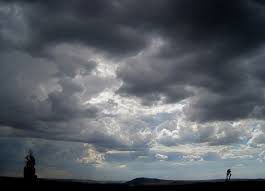
By Kathlean Wolf
Northside News
In 2012, Wisconsin was hit by a 59-day drought and a heatwave, unlike anything Madisonians had seen before. In the summer of 2018, flooding was repeatedly called “unprecedented” by news organizations and government officials. The impact of climate change on our finances, livelihoods and health is starting to be felt in ways that will hopefully change the minds of those who once doubted the science and unite our communities to face coming challenges.
The word we’ll all be hearing in years to come is “resiliency.” What can we do on the Northside to become more resilient to these wildly swinging weather abnormalities? The first step in being a resilient community is to evaluate what types of dangers are more likely in coming decades: for Wisconsin, we can generally expect a warmer, wetter climate.
Many threats are merely exaggerations of things we’ve already experienced. Because the temperature of the oceans has changed, the world-circling winds known as jet streams have been pushed out of their normal positions, sometimes even splitting into two wind-bands. The jet stream that flows across North America has an emerging tendency to become stalled in place, as well as to swing much further to the north or south than was once normal. A warm, dry air mass that would in the past have moved through in a week or two may now sit in one place for a month, changing a dry spell into a full-blown drought. A series of storms that would once have drifted overhead relatively swiftly, dropping gentle rains over the course of the summer, may stall overhead and dump all their water in one place. And when the jet-stream swings far out of its normal north-south bounds, we may be plunged into a polar vortex: an air mass meant for Canada, Greenland or Siberia swinging down to visit us, instead.
Once we know the types of weather our altered climate will bring, we can prepare our households, our communities and our city to face these potential dangers. One change that could provide a major improvement to our resilience in the face of flooding is to lower the water level for Lake Mendota. While some homeowners along the shoreline may object to the change, the danger and cost to homeowners downstream far outweighs the gradual expense of rewilding the shoreline that emerges as water levels drop and relocating docking facilities.
What questions do you have about climate change and the weather changes that it brings? What are you doing to increase the resilience of your household and your community? Share your questions with the Northside News and we’ll explore these topics in more detail over the course of 2019.